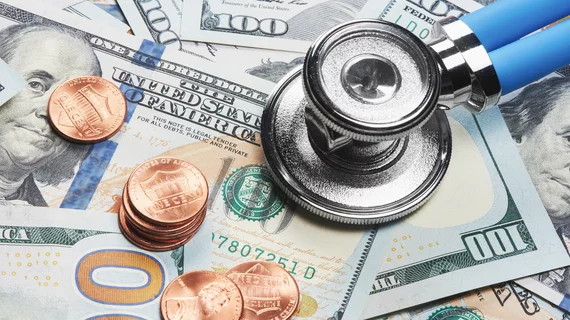46% of Americans have been in debt due to hospital bills
The ever-rising cost of healthcare in the United States is having a crippling financial impact on many Americans, according to a recent survey.
In fact, almost half (46%) admitted healthcare bills have put them in debt, according to research conducted on behalf of Babylon, a digital-first primary care service. The survey queried 5,000 U.S. adults by One Poll between August 8-15, 2022.
Another one-third (34%) said they will struggle or are struggling to pay their healthcare maintenance costs, emergency needs and private health insurance. The findings come as healthcare costs, including premiums and out-of-pocket expenses, are set to increase again this year, Babylon stated.
Younger adults between the ages of 25 and 34 are struggling with costs the most, with 56% saying they will struggle or are struggling to pay for healthcare maintenance costs. Forty-eight percent said the same for emergency needs, and 55% said the same about affording private health insurance. Also, 10% said they would not be able to afford any out-of-pocket expenses if they experienced a medical emergency, while only 11% would only be able to afford up to $50, and an additional 11% would be able to afford up to $100.
Those findings underscore the detrimental impact of healthcare costs, particularly as out-of-pocket spending growth is projected to continue accelerating to 6.1% from 4.2% in 2022, according to the Centers for Medicare and Medicaid Services (CMS). Additionally, only 38% of Americans said they have a dedicated savings fund for healthcare emergencies.
“The healthcare affordability crisis in the United States is particularly worrisome given the inflationary economic market,” Ali Parsa, CEO and founder of Babylon, said in a statement. “Patients are struggling to pay their maintenance costs and a significant number of people are unable to afford any out-of-pocket medical expenses in the case of emergency healthcare requirements. The U.S. healthcare system needs to change to make high-quality healthcare affordable for people of all income levels. Healthcare is not a luxury, it’s a basic requirement.”
The survey also comes as virtual healthcare solutions have become more commonplace. During the height of the COVID-19 pandemic, telehealth demand skyrocketed as offices temporarily shuttered. Not only did telehealth act as a necessary fill in during the pandemic, it can also be significantly less expensive than traditional, in-person care, potentially providing relief to Americans.

